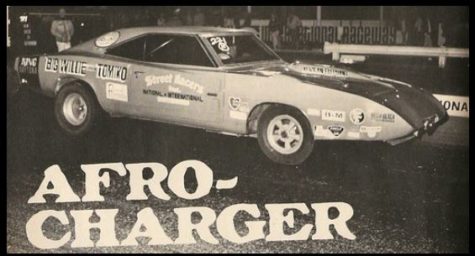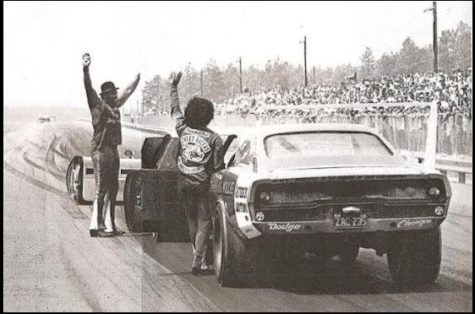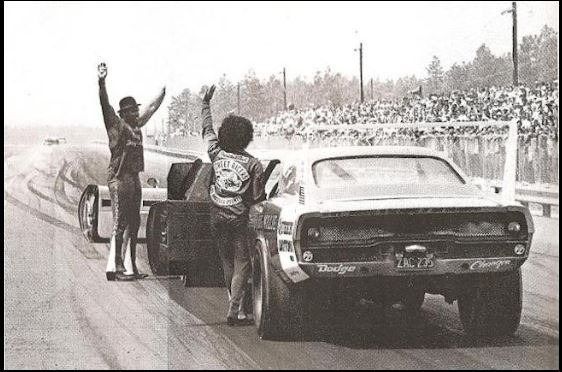The Brotherhood of Street Racers
February 3, 2023
Los Angeles
August 11, the late 60’s
Chaos breaks out through the streets of the Watts neighborhood in the outskirts of L.A. Racial tension among the black community and the uncolored men in blue is through the roof after many unlawful injustice incidents courtesy of the L.A police department.
All of this was started with the arrest of 21 year old Marquette Frye after being arrested for drunk driving; with Marquette resisting arrest with the help of his mother who was at the scene. While the violent encounter was getting worse between the two parties, onlookers crowded to watch the show, where many rumors were sourced from after the event.
Allegations of police brutality, abuse, and racism towards black members of the Watts neighborhood and surrounding areas surged, increasing tension between white officers and African American residents of the area, which led to continuous riots and acts of violence against one another that eventually got out of control.
Thousands of arrests, hundreds of injuries, and a few unfortunate deaths degraded the once peaceful Watts ‘hood, where said events caught the attention of a man called ‘Big Willie’ Robinson. An active street racer in Los Angeles around the 70’s.
UUnexpected hero
Robison was a prominent figure in the L.A street racing scene, not only because of his skills behind the wheel and ability to build monstrous cars, but also his laid back and friendly approach. Loved by many and known by just as many, he caught the attention of the Los Angeles Police Department.
But it was not because he was wanted for his street acts.
LAPD wanted him to open the gates of his interest for street racing for others to follow through. Essentially, authorities helped Robinson expand street racing activity across Los Angeles. Not a trap, not a sting operation to track down street racers; the Watts riots were expanding to other parts of L.A and they were desperate.
“But why would a police department want people to commit MORE crimes?”
That’s a question many people would ask, but all old school petrolheads know the reason. The 60’s and 70’s were the peak era for American muscle cars, with streets, driveways, and race tracks being flooded with big block gas guzzlers that anyone could purchase and turn into fully fledged race cars.
And so, Robinson, with the help of the LAPD, dropped his plan into first gear.
With the freedom Robinson now had at his disposal, he set out to make his efforts and presence known. Hosting street races at isolated venues, he publicly announced events hosted on the outskirts of the Watts neighborhood and surrounding areas; places where he knew the people living there knew a thing or two about racing, or themselves were involved in it.
People quickly pulled up with their hotrods, trailers, and drink coolers, as race tracks were not always accessible to these people, and they regularly had problems with authorities being present during their
shenanigans that left the pavement a crispy black. People from all backgrounds came around; men, women, black, white, latino- nobody was shunned out from burning rubber..
Said efforts, which needed not much effort due to the domino effect it caused, dramatically drowned out violence and racial tension between races in Los Angeles for a simple reason; everyone was too busy racing the streets free of authoritarian repercussion to keep continue focusing on the recurring issues, of which were slowly but surely dying down as part of the LAPD effort.
As a result, and to further strengthen the force of his new unorthodox movement, Robinson who by now was a street racing legend founded, with the help of his wife Tomiko Robinson, the Brotherhood of Street Racers; a club that eventually became a nation-wide effort to bring together street racers during times of racial hardship in communities to spread a short but powerful message:
“Blow motors, not neighborhoods”
And surely, the movement snowballed into something great. Members of the Brotherhood fondly and respectfully nicked Willie “King of The Street” because of his good sportsmanship, amazing personality, and overall being someone who you knew could fix anything; as quoted by one of the Brotherhood’s members:
“You could be the Ku Klux Klan… You could be the Aryan Nation… the Crips… the Bloods… but when you come around Willie, all that stops.”
A powerful and meaningful message sent and showcased by unorthodox means that helped stop the destruction of a community, and possibly a county had it not been for Willie and his clan’s efforts.
“Big Willie” Robinson standing in front of his ‘70 “Queen Daytona” Charger R/T 440
Despite street racing being the primary means to move his objective of peace, Robinson did more than bring people together through cars. He helped establish shelters for orphan children and abuse victims; as well as serving in the military in Vietnam, his passion for the well being of others around him made him a public star and a role model for many individuals that knew and heard of him.
Unfortunately, Robinson and his wife passed away in 2007 and 2012, leaving this world after completing their mission. Their cause did not die with them, however, as the Brotherhood of Street Racers is still active as of 2022, with thousands of members currently involved across all of the U.S.
Although they refrain from endangering the public by explicitly street racing like they once did in the 70’s when the roads were not nearly as crowded, they still carry the spirit of Willie through regional gatherings (called “Chapters” for every state), often hanging out at the race tracks that helped start it all.
Personally, individuals like Willie make me proud of considering myself a car enthusiast as do many people on this earth. Our culture is a double-edged sword; with the power to do bad under the hands of bad people that we do not recognize as our own, but also with the ability to do good to the people around us if done right.
And for this, I personally look up to Willie Robinson as someone who I will work to become one day with the help of the thousands of other car enthusiasts out there with a similar goal of bringing unity through our passion while gasoline cars are still alive.
“We did something that had never been done before… we used racing- racing!- to stop killings.
We’re in history!”
-Big Willie Robinson




